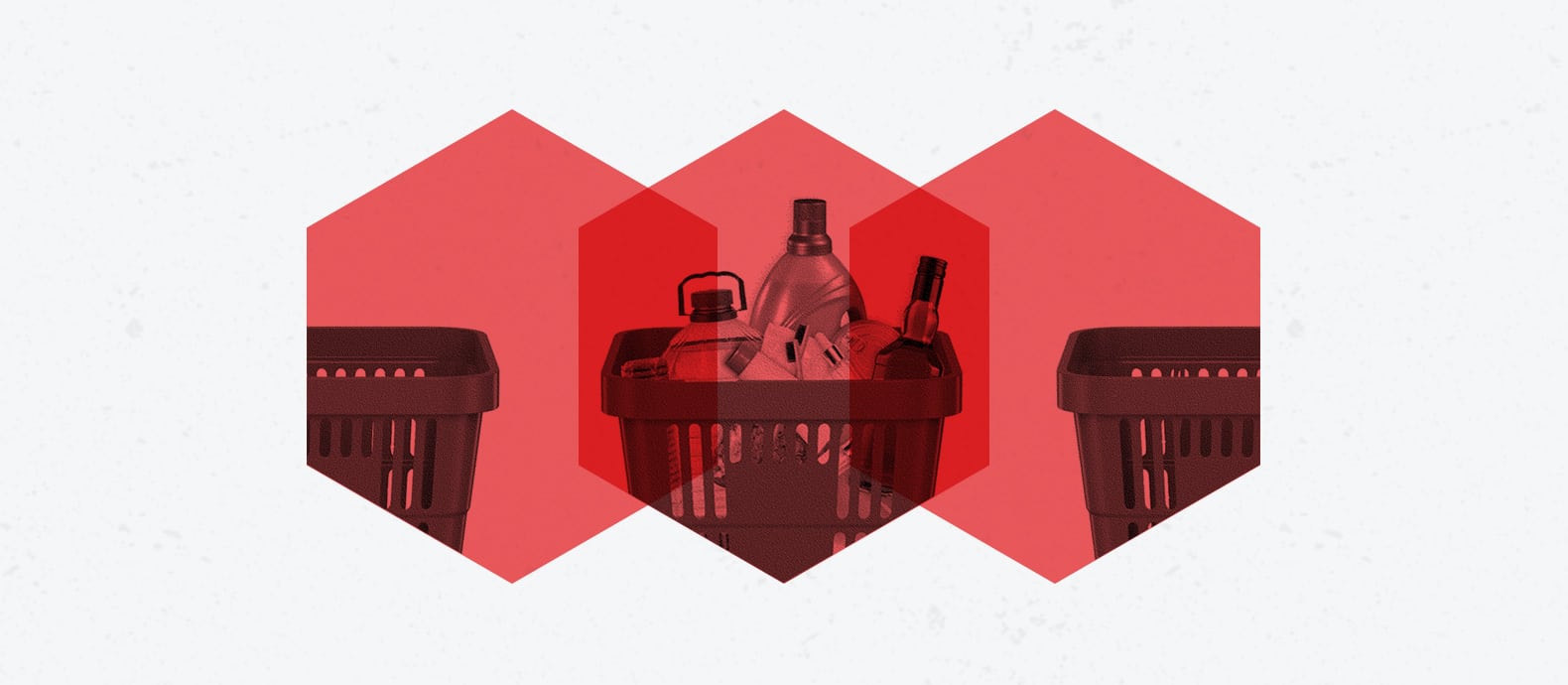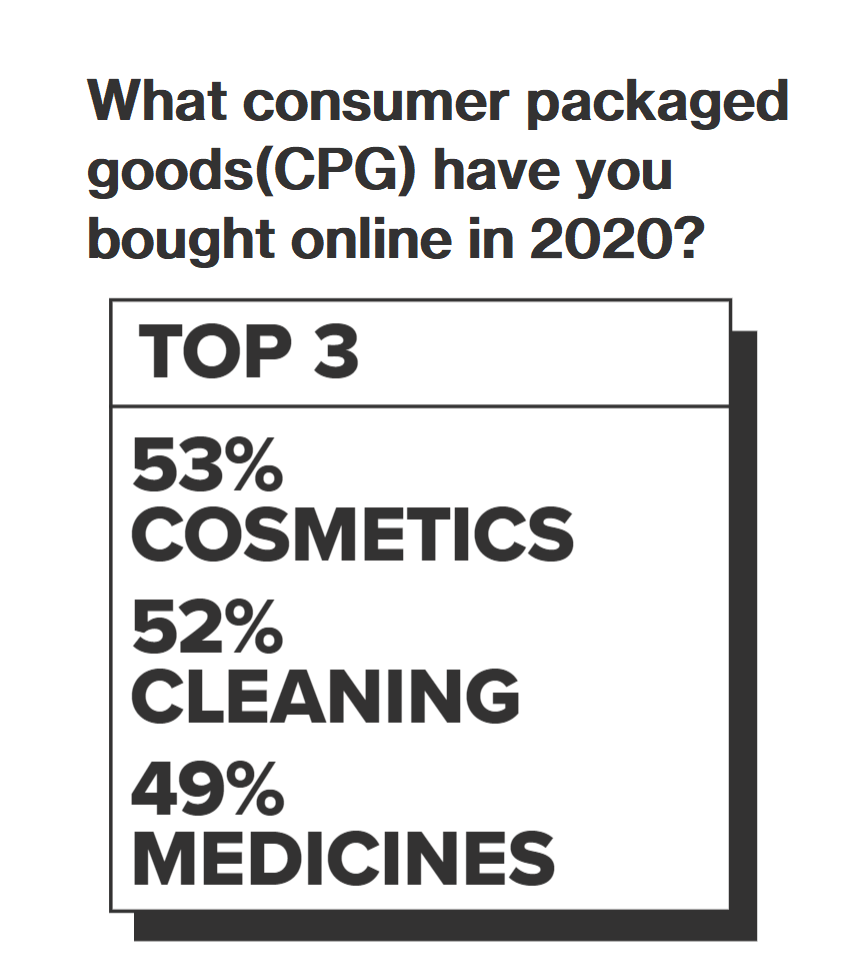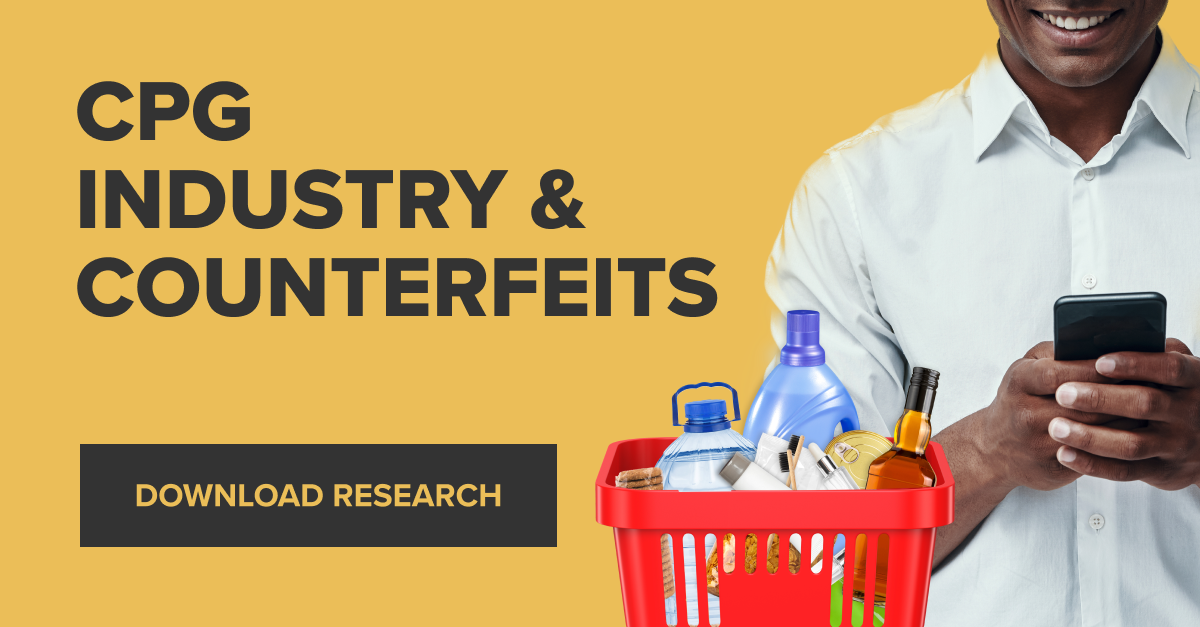
Table of Contents:
Last updated on: June 8, 2022
Many people are careful about counterfeits when shopping for things like luxury goods, fitness apparel, and car parts. However, that’s not the case when it comes to consumer packaged goods (CPG), which are designed for a low price point and short use period. The global CPG market is expected to be worth over $15 trillion by 2025, and counterfeiters want a piece of the action.
CPG goods include things like groceries, pet food, office supplies, cosmetics, over-the-counter (OTC) medicines, cleaning products, and alcohol. Since these products are cheap and perishable, people spend less time trying to find the ideal item before making a purchase.
Red Points’ new market research into CPG and counterfeits shows that many people purchase fakes to save money. Many are also satisfied by the quality of the counterfeit goods they’ve purchased. Our survey asked 2,000 online shoppers in the U.S. about their shopping habits, experience buying fakes, and sentiment toward brands in the CPG industry. We’ll outline some of the main findings here.
Key findings:
Our survey asked participants what they spent the most money on in 2020 online. The top three answers were cosmetics/toiletries (53%), cleaning products (52%), and OTC medicines (49%). Survey participants made at least some online purchases in every other CPG category, as well.

When asked what categories they anticipate spending more on in 2021, cleaning products (40%), cosmetics (38%), and OTC medicines (36%) were again the most popular categories. Only 14% of participants said they won’t be increasing their online spending in any CPG category.
These results are what you’d expect to see during the COVID-19 pandemic, when many people are avoiding stores either out of health concerns or because of local restrictions. Instead of going to the corner store or supermarket, shoppers are logging into Amazon or a retail store site to get what they need.
In some of our previous surveys, respondents have said that quality is the most important factor for a variety of different goods. But with CPG, any number of factors can be more important to the shopper than quality. CPG products are cheap and expendable, and a shopper will simply get something else next time if they are disappointed in an item.
Price is the deciding factor for many categories, including cosmetics/toiletries, OTC medicines, cleaning products, and pet food. On the other hand, shoppers in the survey cared least about price when buying cigarettes, prepared food, and alcohol.
Reviews and ratings are some of the most important shopping signals in ecommerce, and it’s the same for CPG. Reviews/ratings were most important for ready-to-eat meals, alcohol, bakery products, and beverages.
Ready for some bad news? Only 15% of survey respondents overall said that brand reputation was the deciding factor when shopping for CPG. Product popularity was the only other factor that scored lower. In particular, participants cared least about brand reputation when buying pet food.
Overall, 56% of participants had bought fake CPG online. The categories of CPG with the most fakes were cosmetics (14%), cleaning products (13%), OTC medicines (10%), and baked goods (10%). These numbers parallel how much people bought in different categories. Now, you might be thinking, are fake baked goods even possible?
But, remember that these are products that were purchased online. Shoppers don’t get to pick up and inspect the item before they buy (which is why they rely on ratings and reviews). Counterfeiters can get away with a lot more in ecommerce than the physical world, and if there’s a hot new snack flying off digital shelves, counterfeiters can try to capitalize on that.
Our survey also revealed that people had found fakes in every category. Some respondents noted that they have even bought fake pet medicine, as well.
In the final section of the survey, we asked participants who had bought a fake if the quality was satisfactory, and if purchasing a counterfeit changed their perception of the brand. The results show that counterfeits met (35%) or exceeded (50%) the expectations of buyers. Overall, most people were satisfied with the fake cleaning products/toiletries and cosmetics they purchased.
At the same time, most people formed negative perceptions of brands after finding counterfeit products. Across all categories, 58% of shoppers think brands need to do more to protect consumers. After that, 39% said they wouldn’t buy or trust the brand again. This shows that a single counterfeit product is enough to get an existing customer to stop buying from your brand.
Fast moving consumer goods are unique because they are cheap and expendable. People don’t take the time to sort out the real from the fake, and when they receive a fake, they are likely to be impressed with its quality. At that point, they may distrust the brand or avoid making future purchases altogether.
That’s why it’s so important to get ahead of the counterfeiters and proactively remove their online listings with a brand protection software. The right technology can detect fakes in a wide range of online channels and enforce your IP efficiently. To learn more about counterfeits in the CPG industry, check out the full market research here.
